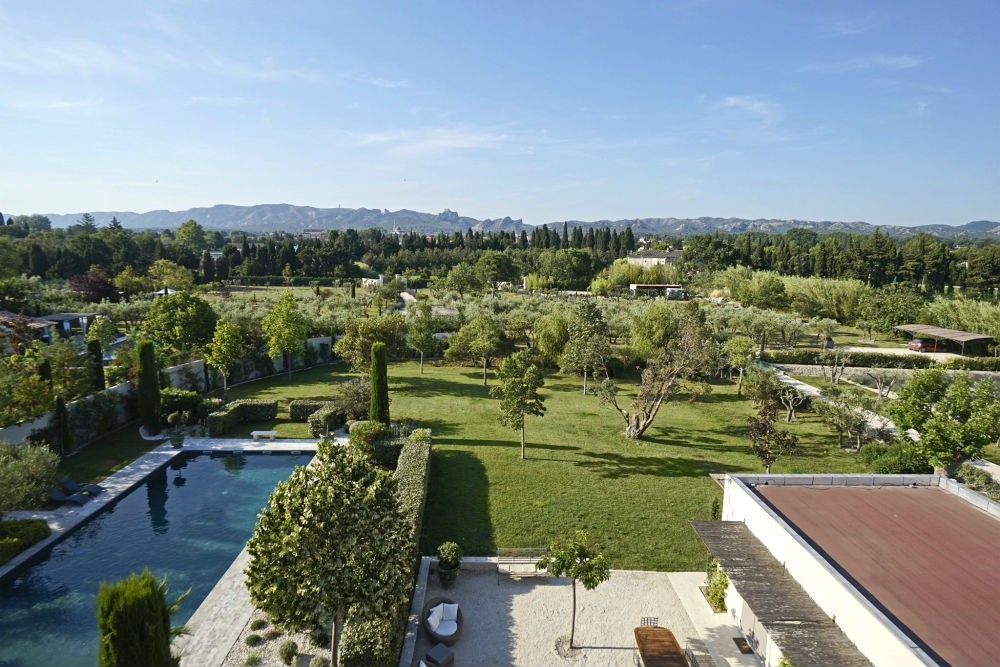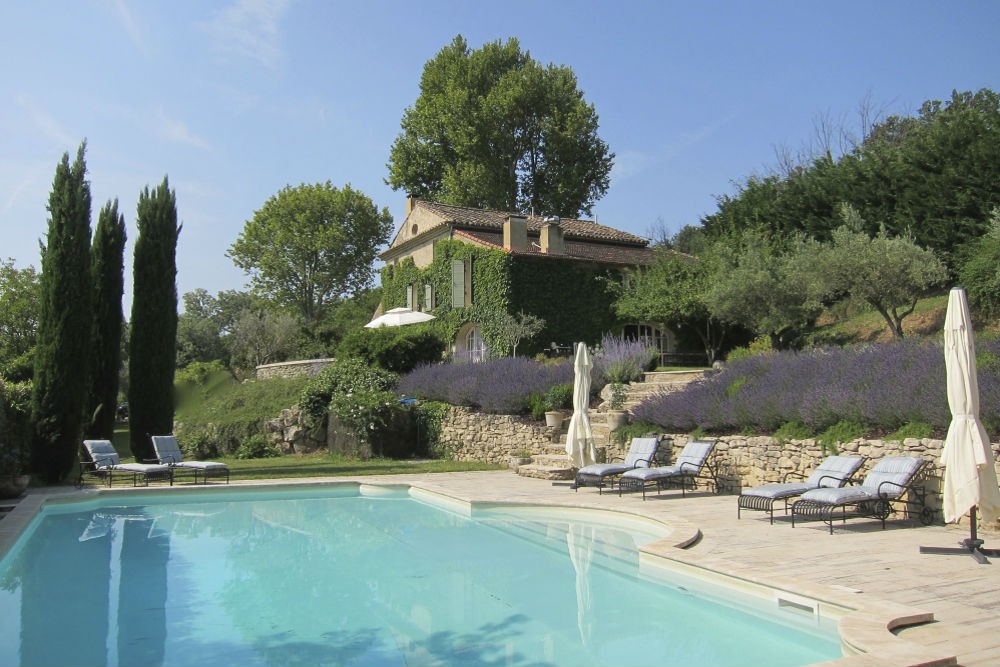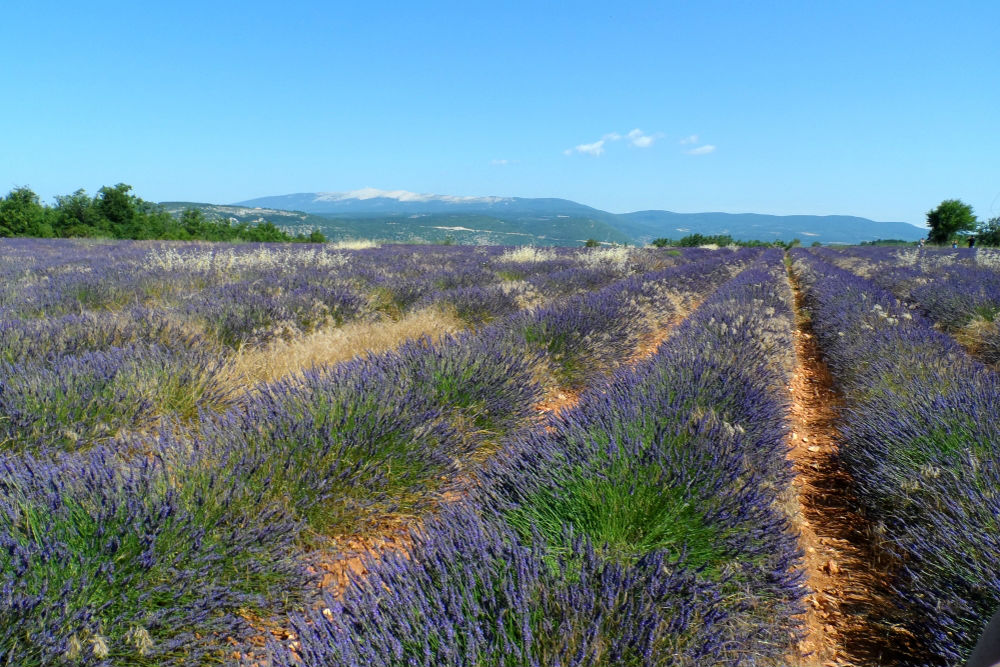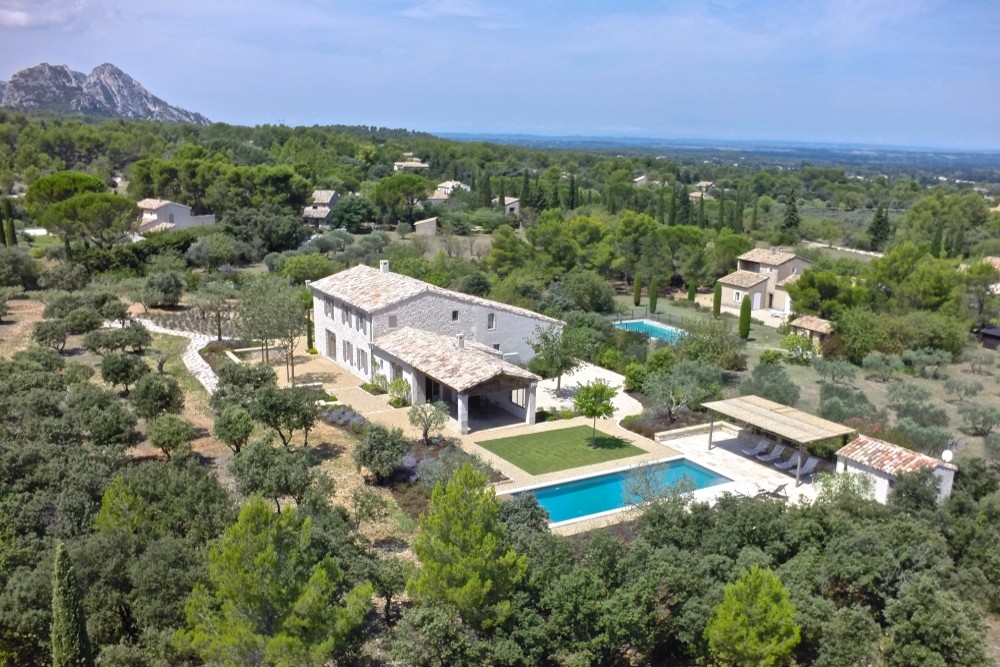France Villa Vacations: Insider’s Guide
 Mas Fleuri, Saint-Remy-de-Provence, France. Photo courtesy Just France.
Mas Fleuri, Saint-Remy-de-Provence, France. Photo courtesy Just France.
In some cases, Wendy has several trip-planning specialists she recommends for a destination and would like to connect with you directly to determine who would best meet your needs. This is one of those cases. Please click on the CONTACT button (below) to find out from Wendy which travel expert is best for your specific trip goals and challenges.

Where to Rent (And Where to Avoid)
Most underrated locations
The Vaucluse Plateau region northeast of Avignon. Wine is the central activity here—think Chateauneuf du Pape, as well as the top Cotes du Rhone producers. The bicycling is legendary, with the climb up Mont Ventoux on many cyclists’ bucket lists. Rental prices here can be 20 to 40 percent less than a comparable villa near Saint-Remy, in the Alpilles region—and you won’t hear nearly as much English spoken.
Biarritz, Saint-Jean-de-Luz, and the other southwestern coastal towns along the Atlantic Ocean are unpretentious and uncrowded, with lovely pedestrian-only sections of town perfect for a stroll. Here you have easy access to Spain and the Pyrenees by car, and to Paris by air.
Most overrated locations
The towns and areas in and immediately around Cannes and Saint-Tropez. The hills above Cannes are honeycombed with villas of all description, but trying to walk from there to town or the beach is an experiment in poor urban planning, with streets and overpasses seemingly haphazardly placed. Even worse, rental prices are extravagant here, and the services (cleaning and especially chef service) are much more expensive than in Provence. The atmosphere is more relaxed and charming in Mougins and Valbonne, about 20 minutes inland. In Saint-Tropez, the summer traffic is notorious, with one coast road leading to the beaches. The town itself is very pleasant, with its port and old cobblestoned streets, but the hassle of getting there in the hot months may not be worth it.
Best location for sporty travelers
Provence. You can go hiking in Le Sentier des Ocres and Le Petit Colorado at Roussillon, cycling on Mont Ventoux or the ridge of the Luberon, canoeing under the Pont du Gard, or kayaking the Sorgue River. Simply setting off on foot from your villa can lead to some amazing discoveries, like discovering ancient overgrown ruins off in a corner of the property.
Best location for a taste of village life
For a first-time visitor to Provence, or for families, Saint-Remy-de-Provence is a good choice. It’s a central hub for discovering the region—Arles, Nimes, Avignon, the coast—and remains authentically Provencal even after years of development around the edges. Opt for a property close enough to town that you can walk, as parking can be a challenge in Saint-Remy year-round, and the Wednesday farmers’ market is a zoo during high season (if you go, make a reservation for lunch, or you’ll be stuck at one of the more touristy restaurants).
For travelers who know the region or who want a quiet retreat, try either Sablet—in the thick of wine country northeast of Avignon, with acres of vines dotted along gentle hillsides—or Bonnieux, east of Avignon, which affords views of the famous cliffside “perched villages.” Both have just the right amount of commerce for daily living.
Best location for romance
Gordes, the sweetest of the “perched villages” built on the slopes of Monts de Vaucluse, with heart-stopping views of the Luberon Valley below. If you’re looking for some special pampering during your villa stay, there are a couple of boutique hotels in town that offer tranquil spas and elegant restaurants.
Fresh flowers can add romance to any room, and bouquets throughout France are quite inexpensive compared to the U.S. Stop into a village fleuriste and ask them to make up a bunch for 40 euros or so—they wind up being enormous bouquets and worth every cent.
Best location for a big group
All those huge, historic villas in the Loire Valley aren’t just for day-trippers—some are available for rent too. The biking there is pretty flat, making it good for all ages. And the access is easy from Paris: two-and-a-half hours by car, or 90 minutes by TGV.
Best location for home cooks
There are year-round farmers’ markets throughout Provence, including the all-organic evening one in Velleron. You’ll find wicker or straw baskets in the front closet or pantry of most villas; use these for your shopping trips, as grocers often don’t provide bags.

La Tourelle, Provence. Photo courtesy Just France.
Do’s and Don’ts
The arrival
Be sure to print out a hard copy of your arrival instructions. Do not rely on your smartphone, as the connection out in the countryside can be spotty, and your battery may have died en route.
Must-have amenities
A separate washer and dryer. In Paris you often find the combination machines, which just don’t work as well.
Amenities worth splurging on
Have your kitchen stocked with a few groceries, plus the first evening’s meal, so you don’t have to run out to a grocery store after traveling many miles. Take a wine tour early in the week so you can stock the house with your new favorites.
Amenities not worth splurging on
Don’t bother with a dinner cruise in Paris: The food’s no good, and there are better ways to see the city at night—notably at the Arc de Triomphe.
A word to the wise
With the amount of time people devote to choosing the villa, it’s a shame to hardly see the place except to sleep. Schedule at least one day off during your week so that you can enjoy the beautiful surroundings, breathe the fresh air, walk into village for an ice cream, or go to that little shop you drove by earlier in the week on the way to lunch.
Best Times to Go
Mid-May to late June is sublime—especially in Provence, when spring is in full bloom, everyone seems to have a twinkle in their eye, and the produce is at its peak. The warm, sunny days (save for the occasional rain and mistral wind) and extra-long evenings mean you can usually enjoy all three meals outside; the cool nights are perfect for sleeping. Many villages hold festivals, with costumed parades and traditional food and activities, at the end of June. Be prepared for many shops, attractions, and restaurants to be closed on the national holidays that fall annually on May 1, 8, 14, 24, and 25.
Worst Times to Go
The first two weeks of August, when everything is at its most intense—the heat, the crowds, the traffic. The weekend gridlock on the autoroute heading south from Paris is legendary, and trains must be booked months in advance. There’s always a long line at the car-rental office, and the sun is merciless. All the rental houses are full, the village markets get crowded by 10 a.m., and the best restaurants are fully booked and their staffs stressed. If you must travel then, choose a less-visited region, find a Friday-to-Friday property, or arrive a day early and book a hotel to avoid the traffic.
Late January through February. While Paris buzzes along during these off-season months, the rest of the country is sleepy, and the outdoor life that is the essence of the culture here is dormant. Many restaurants have their fermeture annuelle (annual closing) then, as do a variety of shops. It’s also cold and often windy in Provence, and some older villas can suffer from draftiness or cold spots.
Minimum Stays

Particularly in Provence, a seven-night stay starting and ending on a Saturday is generally required, beginning at 4 p.m. on the first day and ending at 10 a.m. on the last day.
Biggest Rookie Mistakes
Assuming a villa rental will be like a hotel. Unless you pay extra, there is usually no housekeeper to make the beds and empty the trash daily (most homes include only a mid-week cleaning). Provisions such as toiletries and a minibar-type selection of goodies are not standard. Renting a villa means spending 5 to 10 minutes closing and locking the windows and shutters each time you leave, and taking your own trash to the municipal dumpster.
Waiting until the last minute. Starting in January, properties book quickly for that year’s summer season. Rental vans sell out four to six weeks in advance, reservations on the popular weekend TGV trains are often sold out 45 days ahead, and the best private chefs get booked early.
Thinking you can get a large house with six or more bedrooms, a pool, and wonderful views, all within easy walking distance to the local village. While these properties exist, the majority of them are farther out in the country.
The French Advantage
Some travelers assume that everyone will speak English. In the bigger cities, that’s true, but in rural villages it may be a challenge to communicate. A few words of French, a cooperative attitude, and some hand gestures can go far, but having someone in your group who speaks good French will really help. While Parisians can be brusque, the Provençaux are as warm as their long sunny days.
Crucial Questions to Ask Before Renting
Couples traveling together should make sure the bedrooms and baths are equivalent—and recognize that they might have to go with a larger house in order to get suitable rooms for everyone.
Families with small children should inquire about the location of the bedrooms in the house, and if there are lots of steps inside or out. Some older villas have lots of steps, especially those with great views—they’re likely set on a hillside, which means you may have to climb up and down stone stairs repeatedly to access the pool or driveway.
If the house description does not clearly mention air conditioning, it means there is none. A/C is still the exception, not the rule, throughout France (and when it does exist, it will cool to 74 degrees at the coldest). Fans are provided for bedrooms.








